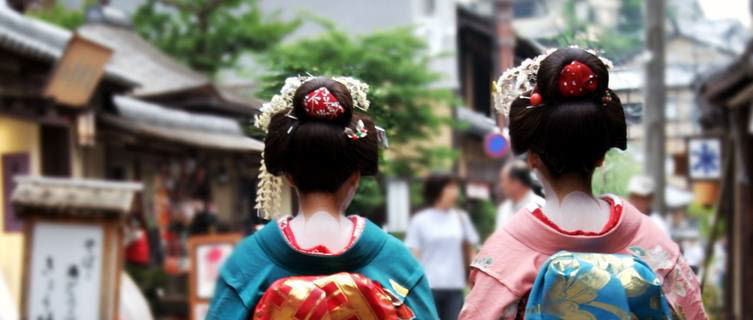
Kyoto travel guide
Ruling as Japan’s imperial capital for more than a thousand years, Kyoto is a city steeped in historic lore and legacy, where ancient cobbled streets echo with the click-clack of geisha clogs, world-renowned art adorns majestic palaces, and bamboo screens conceal serene teahouses brewing ceremonial matcha harking back to age-old customs and aesthetics.
Unlike other Japanese cities, Kyoto escaped the mass destruction wrought by WWII, allowing it to remain a well-preserved window into the country’s mystical past. Visitors can pick between an overwhelming array of over 1,600 Buddhist temples, 400 Shinto shrines and 17 UNESCO World Heritage Sites, but it’s equally as enthralling to get lost among its labyrinthine backstreets uncovering hidden gardens, local markets and off-beat museums along the way.
Those with little time should make a beeline for easterly Higashiyama, the city’s richest sightseeing district, known for its traditional, picturesque wooden machiya townhouses occupied by tofu sellers, tea merchants and kimono rental shops. Sightseers can learn more about the Japanese way of life through the city’s thriving cultural scene, particularly in the geisha neighbourhood of Gion where time-honoured theatres stage all kinds of kabuki dance-drama, stylised puppetry and traditional court music.
For all its ancient allure, the cosmopolitan metropolis has its fair share of high-tech, high-octane draws, as anyone arriving on the futuristic Shinkansen (Bullet Train) can vouch. Add to this a dynamic nightlife of sake breweries and cocktail bars, a glittering dining scene boasting over 100 Michelin-starred restaurants, including eight three-starred restaurants, and a trove of stunning ryokan (traditional inn) accommodation, and it’s easy to see why travellers of all types are spellbound by the city.
While Kyoto is perennially popular, its busiest periods are during the springtime cherry blossom season (March to April) and in autumn (October to November) when advance bookings are vital.
Do you have any Feedback about this page?
© 2025 Columbus Travel Media Ltd. All rights reserved. No part of this site may be reproduced without our written permission, click here for information on Columbus Content Solutions.










 You know where
You know where